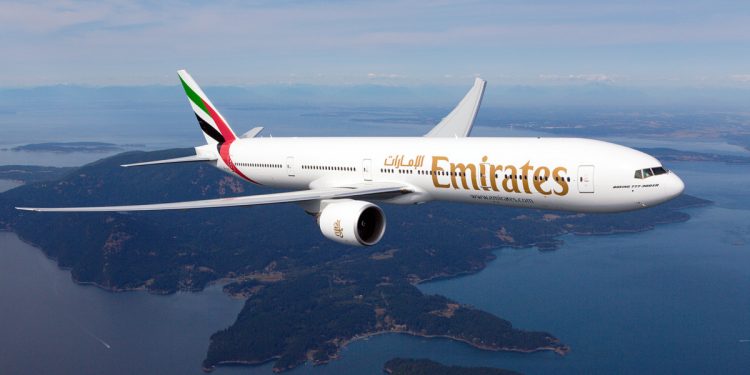Dubai-based Emirates will resume its service between Dubai and Auckland in January 2021, making it the world’s longest flight since COVID-19 caused countries to close their borders. Rather than a daily flight as it was previously, the flight will be four times per week.

The flight will operate using a Boeing 777-300ER rather than an Airbus A380. According to the aviation website Live And Lets Fly, the route will set a distance record for a regularly scheduled passenger flight utilizing this type of aircraft.
DXB to AKL was the world’s fourth longest flight
Before the coronavirus crisis, the route was the world’s fourth-longest after the following flights:
- Newark to Singapore on Singapore Airlines
- Auckland to Doha on Qatar Airways
- Perth to London to Heathrow on Qantas
Since the global pandemic’s reduction in the number of people flying, Emirates has still flown between the Gulf State and Auckland, but these have been cargo-only flights operated by a Boeing 777-300ER.
Without passengers, the aircraft could make the 7,668 nautical miles (14,201 kilometers) trip without stopping for fuel. Still, as a passenger flight, it might need to be weight-restricted on the westward return journey from Auckland to Dubai.
The route is close to the 777-300ERs maximum range
When Emirates first launched the route back in March of 2016, it deployed the world’s longest-range aircraft, the Boeing 777-200LR.
This widebody has a maximum range of 9,395 nautical miles (17,395 kilometers), while the 300ER version’s full range, according to the website Aerospace Technology is 7,825 nautical miles (14,490 kilometers).

In terms of distance, the Boeing 777-300ER can make the journey but is cutting it close to the aircraft’s maximum range. An alternative would be a stop in Australia before flying on to New Zealand. If Emirates were to do this, it could attract more passengers.
The CDC is concerned about long-haul flights
A recent study by a group of scientists published by the US Centres for Disease Control and Prevention (CDC) suggests that long-haul flights have the potential for the widespread transmission of COVID-19.
Analyzing data from a Hanoi to London flight in March, they found that a passenger in business class transmitted the virus to at least 12 other passengers.

They concluded that the people infected got the coronavirus from airborne transmission or droplets. They also cited seating proximity to the infected person as something to be concerned about, as the passengers that got COVID-19 were also in business class.









